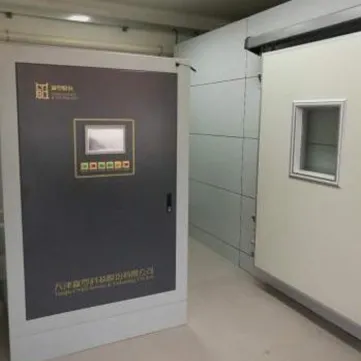Cultural heritage collections are an important part of our history and identity. They include artifacts, documents, and other objects that have significant cultural, historical, or scientific value. However, these collections are also vulnerable to damage and deterioration over time. To protect cultural heritage in collections preventively, here are some tips to follow.
The environment in which cultural heritage collections are stored can have a significant impact on their preservation. It is important to control the temperature, humidity, and light levels in the storage area to prevent damage to the objects. Ideally, the temperature should be between 60-70 degrees Fahrenheit, the relative humidity should be between 40-60%, and the light levels should be low and controlled.
When handling cultural heritage objects, it is important to do so with care. Objects should be handled as little as possible and only by trained professionals. Gloves should be worn to prevent oils and dirt from the hands from damaging the objects. Objects should be lifted and moved carefully to prevent damage.
Constant Humidity And Clean Storage Cabinet
Cultural heritage objects should be stored in appropriate containers and on appropriate shelving. Containers should be acid-free and made of materials that will not damage the objects. Shelving should be sturdy and able to support the weight of the objects. Objects should be stored in a way that prevents them from touching each other and causing damage.
Pests such as insects and rodents can cause significant damage to cultural heritage collections. It is important to monitor for pests and take appropriate measures to prevent infestations. This may include using traps, insecticides, or other methods to control pests.
Regular inspections of cultural heritage collections can help identify potential problems before they become serious. Inspections should be conducted by trained professionals who can identify signs of damage or deterioration. Inspections should be conducted on a regular basis, such as annually or bi-annually.
Conservation techniques can be used to prevent damage to cultural heritage collections. These techniques may include cleaning, stabilizing, and repairing objects. Conservation techniques should only be performed by trained professionals who have the necessary skills and knowledge. Closing the constant humidity and clean storage cabinet's door can realize constant humidity, cleanness, and low oxygen regulation, without a power supply.
Emergency plans should be developed to address potential disasters such as fires, floods, or earthquakes. These plans should include procedures for evacuating objects, protecting them from damage, and recovering them after the disaster has passed. Emergency plans should be reviewed and updated on a regular basis.
Low-oxygen(Constant Humidity) And Clean Showcase
Staff and visitors should be educated about the importance of cultural heritage collections and how to protect them. This may include providing training on handling objects, explaining the importance of environmental controls, and providing information on emergency procedures.
Collaborating with other institutions can help prevent damage to cultural heritage collections. This may include sharing information on best practices, collaborating on conservation projects, or sharing resources such as storage facilities.
If you are unsure about how to protect cultural heritage collections in your care, seek professional advice. There are many organizations and individuals who specialize in the preservation of cultural heritage collections and can provide guidance and advice.
In conclusion, protecting cultural heritage collections preventively requires careful attention to environmental controls, handling, storage, pest control, inspections, conservation techniques, emergency plans, education, collaboration, and seeking professional advice. By following these tips, you can help ensure that cultural heritage collections are preserved for future generations to enjoy and learn from.
 Atmospheric-Pressure Low Oxygen Controlled Atmosphere Insecticidal Warehouse/ Cabinet
Atmospheric-Pressure Low Oxygen Controlled Atmosphere Insecticidal Warehouse/ Cabinet
 Low-oxygen(constant Humidity) And Clean Storage Cabinet
Low-oxygen(constant Humidity) And Clean Storage Cabinet
 Museum Collection Storage Warehouse
Museum Collection Storage Warehouse
 Low Oxygen Constant Humidity and Clean Warehouse
Low Oxygen Constant Humidity and Clean Warehouse
 Museum Drawer Cabinets
Museum Drawer Cabinets
 Museum Wall Display Case
Museum Wall Display Case
 Museum Table Display Cases
Museum Table Display Cases
 Museum Exhibit Display Cases
Museum Exhibit Display Cases